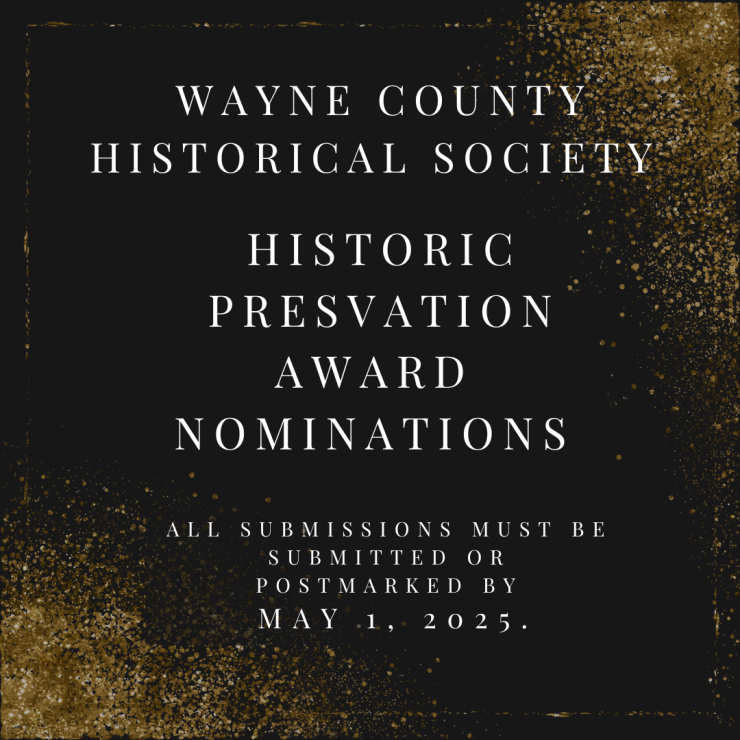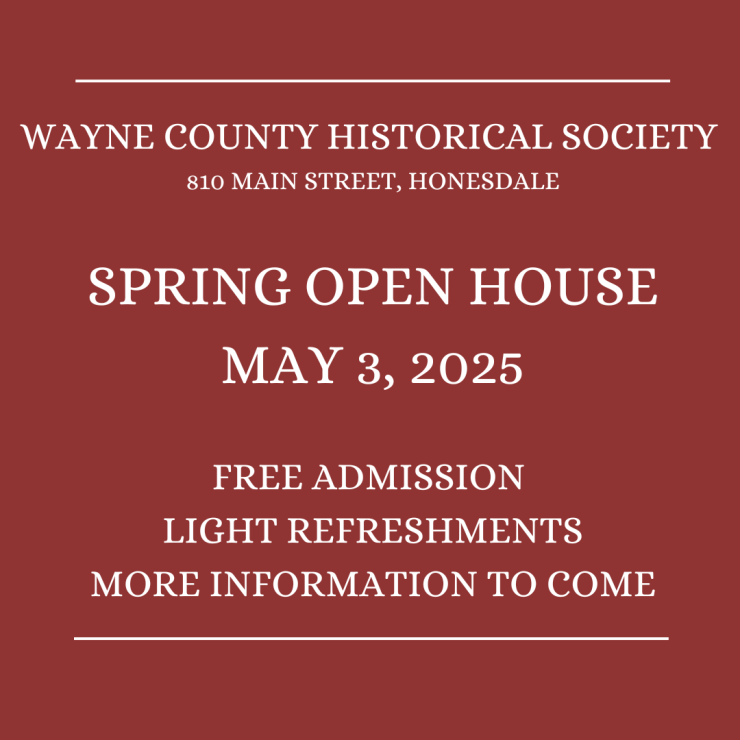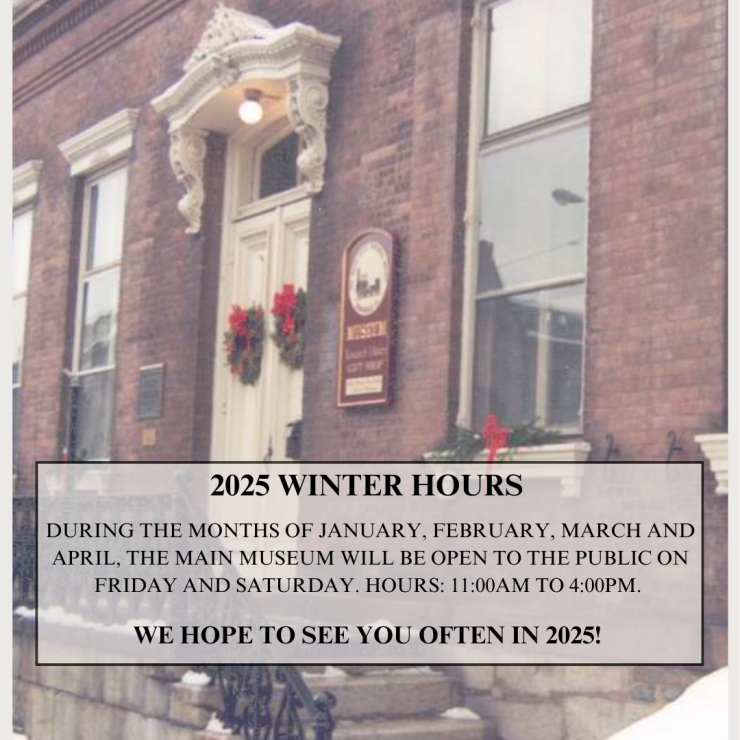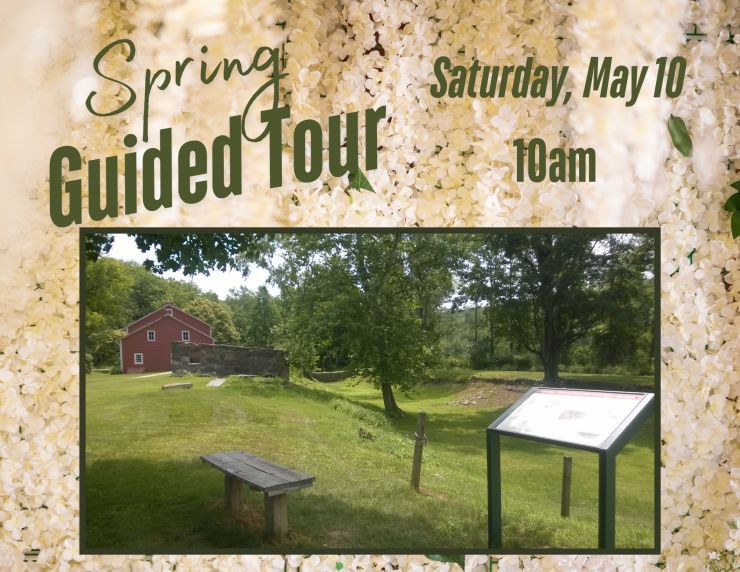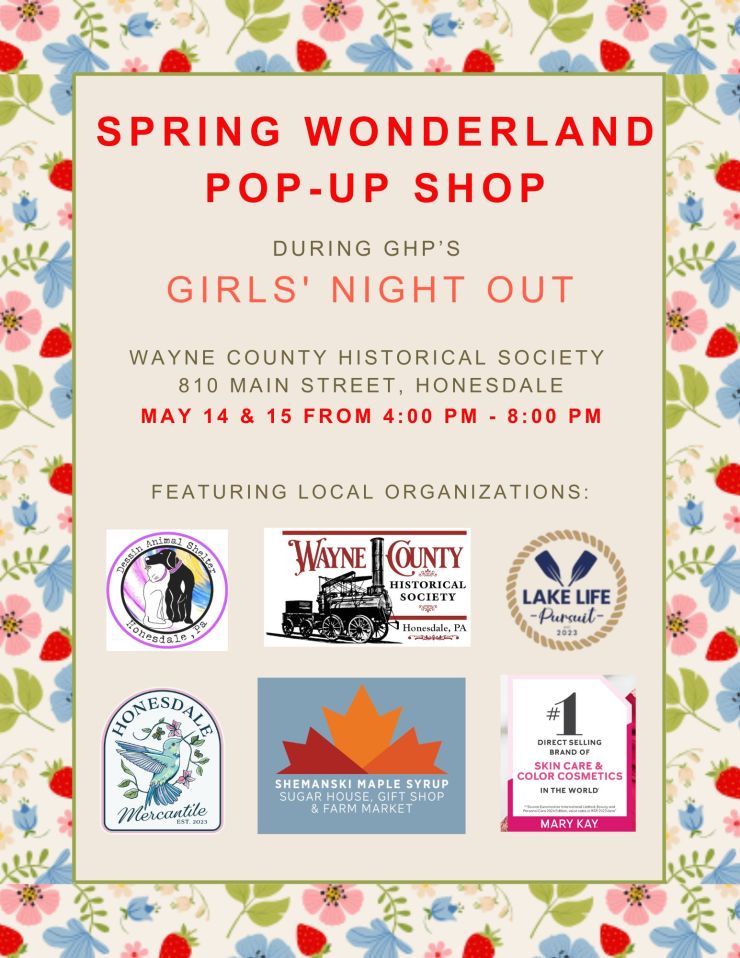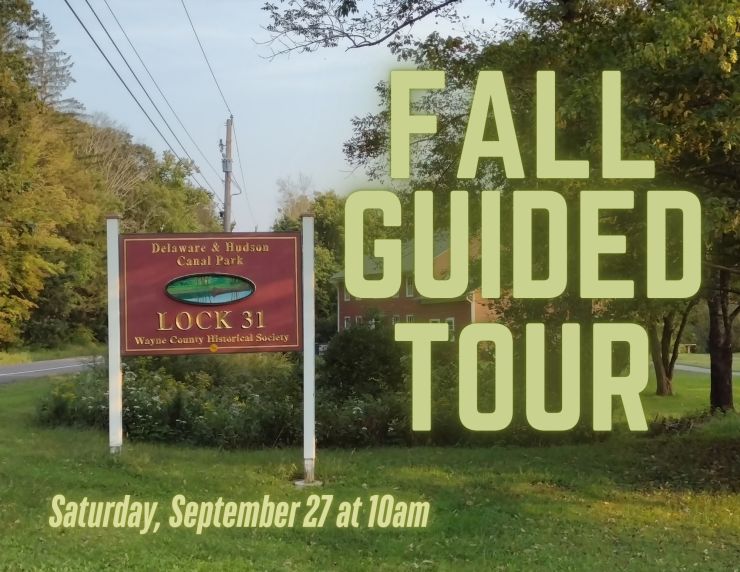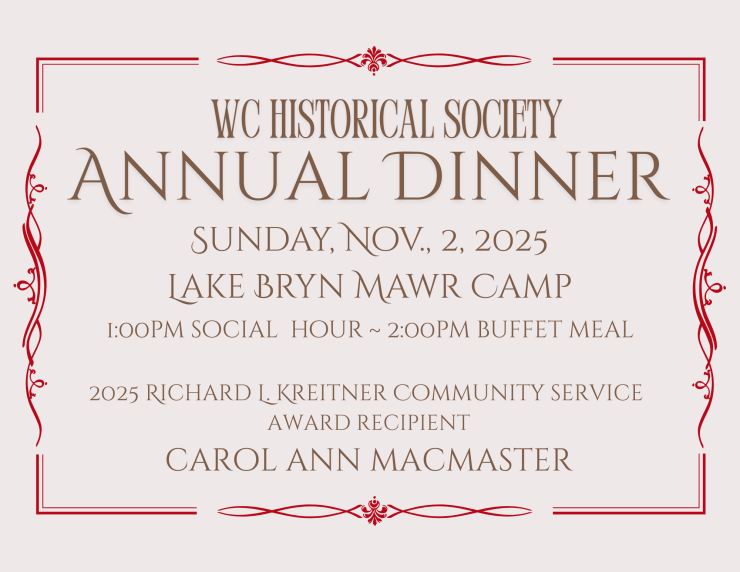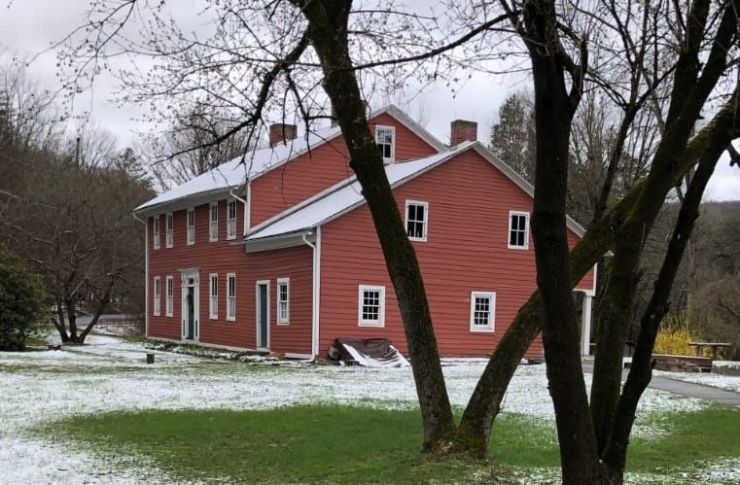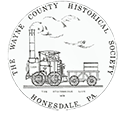Cherry Ridge Township
Cherry Ridge Township was established on April 30, 1844 from portions of Texas and Canaan Townships. It takes its name from the abundance of cherry trees in the area and had been known by that name long before it officially became a township.
The earliest settlers arrived there prior to the establishment of the county in 1798 and included Enos Woodward with his sons from Massachusetts, and Col. John H. Schenck, a native of Sussex County, New Jersey to be followed soon after by Daniel Davis and Abraham J. Stryker. Each of them cleared large tracts of land for farms. According to the 1799 tax assessment for Canaan Township Enos Woodward had a total of 225 acres and his son John had 400 acres. Sons Silas and Asahel each had 320 acres and Col. Schenck owned 440 acres of land.
These men were under the impression that the legal title to their land came from Connecticut. This was due to a charter granted to Connecticut by King Charles II in 1662 that conveyed to Connecticut all of the lands west of it which included Pennsylvania. A charter granted to William Penn by Charles II in 1681 overlapped the grant issued in 1662. This led to the Yankee-Pennamite War, a long, heated conflict that lasted for many years until the Continental Congress overturned the king’s ruling and upheld Pennsylvania’s claim in 1782. Despite the ruling, the controversy continued and was not settled until 1799.
The early settlers in Cherry Ridge did not learn of their mistake until Dr. Lucius Collin purchased a portion of Enos Woodward’s land and discovered that, under the Pennsylvania proprietorship, the land had been warranted to Edward Tilghman of Philadelphia who had put it in the hands of his agent, Jason Torrey. As soon as Dr. Collins became aware of this he rode to Philadelphia and paid $300 to Tilghman for the tract he had obtained from Woodward. Dr. Collins had one of the first legal titles to land in Cherry Ridge.
Dr. Collins, a native of Litchfield, Connecticut, practiced medicine for a time in Saybrook, Connecticut and served as a surgeon in the Revolutionary War. He first settled in Wayne County about 1800 at Little Meadows in Salem Township, later moving to Cherry Ridge. He covered considerable distances on horseback through wilderness to visit his patients. As was the custom at the time, he compounded his own medicine which he carried in his saddlebags. The territory he covered included Sterling, Salem, Canaan, Bethany, Mount Pleasant, Damascus, Paupack and even parts of Pike County. Circumstances required Dr. Collins to be quite inventive. His patient, Jabez Bidwell of Salem, was struck on the head by a falling tree limb resulting in a fractured skull that was compressing the brain. Lacking a suitable instrument to relieve the compression, Dr. Collins sought the help of Robert Bortree, a gunsmith and skilled metal worker from Sterling Township. With the doctor’s guidance, Bortree fashioned an instrument with which Dr. Collins successfully performed the surgery.
The stagecoach route that ran on the Milford and Owego Turnpike resulted in the establishment of the first post office in the township on Samuel Darling’s farm in 1824. Thomas Lindsey was the first postmaster and served in that capacity until 1839 when the post office was moved to Clark’s Corners and William McLaury succeeded him as postmaster. The first school in Cherry Ridge was a log cabin erected about 1810 with Nancy Ainsley as the first teacher. Abraham I. Stryker built the first sawmill on what was known as Stryker Brook. One of the earliest taverns of which there is a record was kept by Daniel Davis.
About 1800 Daniel Davis also made the first leather manufactured in the county. The quantity he produced was small but it was said to be of excellent quality. In 1850 Loring A. Robinson from New York built a tannery in what was called the Middle Valley. It soon grew to be the largest tannery in Pennsylvania. It consisted of 365 vats and employed from eighty to one hundred men. In April of 1871 the tannery burned to the ground resulting in a loss of $50,000 which was covered by insurance. The tannery was re-built and operated until 1883 when the supply of bark was exhausted.
As early as 1812 Elder William Purdy came from Paupack to hold religious meetings at the home of Abraham I. Stryker and later at the home of Dr. Lucius Collins as well as the schoolhouse. As the population of the township increased it was decided to build a church. In 1849 Dr. Collins started a subscription and $324 was raised with $127 of that amount coming from residents of Honesdale. In that same year the Union Church, owned by the Presbyterians and Methodists, was erected at a cost of more than $550.
Today land use in Cherry Ridge Township is about equally divided between agriculture and residential. The population of the township began to increase rapidly and by 1990 had reached 1,600. Its rolling hills and scenic views make it one of Wayne County’s most sought after locations.
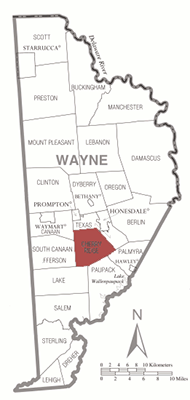
Navigation
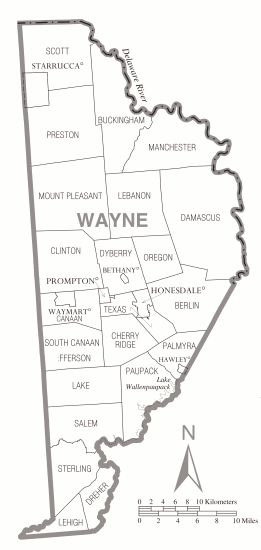
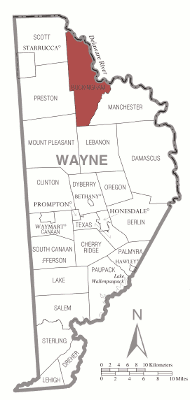
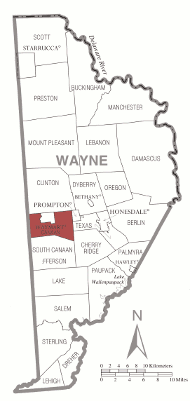

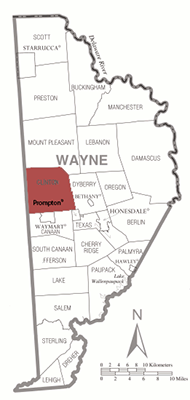
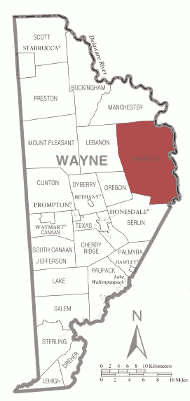
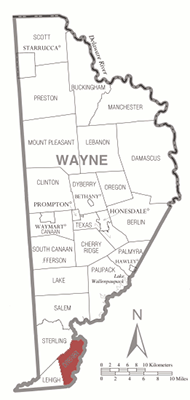
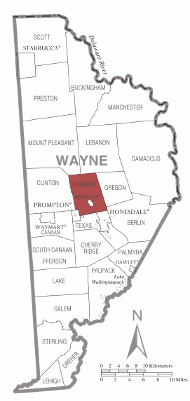
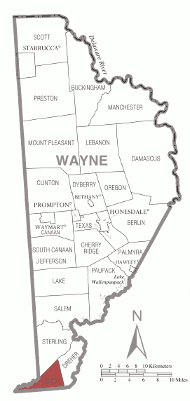

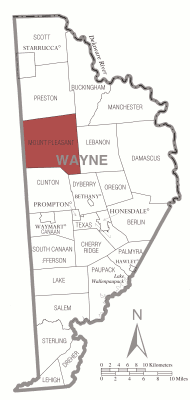
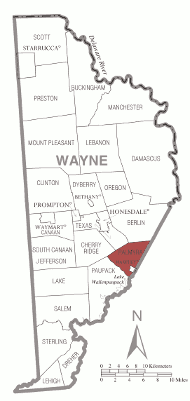
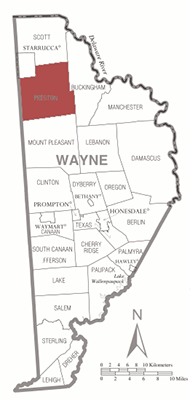


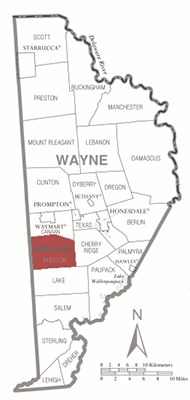
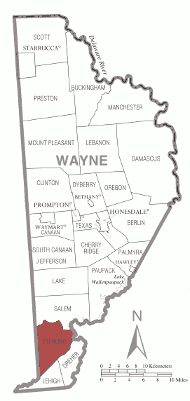
News and Events
